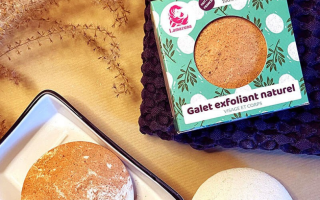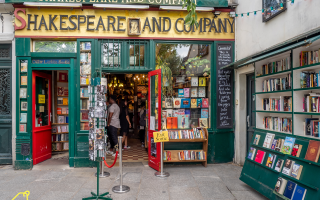Creating your dream French Garden
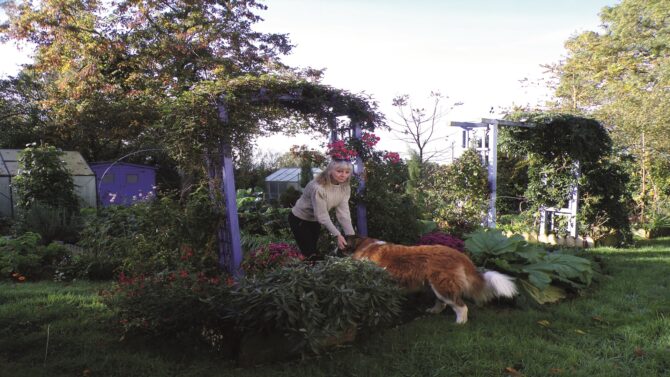
Gardener and artist Sue Goodman provides advice and inspiration to help you create your own dream French garden…
A sketchbook in one hand and the other dislodging a weed, each slowing down the other… All I ever wanted to do was to paint, and gardening is an extension of that passion. I have a sense of completeness, of simple happiness, between studio and garden. The garden is a place of quiet beauty giving delight, satisfaction and repose as well as exercise to mind and body. Just as the paintings display my love of nature and who I am, so does the garden.
My father studied horticulture and continued his love of gardening throughout life. As a child I spent a lot of time with grandparents absorbing their enthusiasm and knowledge. My grandfather grew chrysanthemums; huge, perfect blooms for sale in flower shops. Each plant was rigidly tied to canes and regularly trimmed to achieve the supreme domed heads. This idealism didn’t appeal to me. The plants seemed inflexible, unbending held in their constraints, even if the results were fabulous. Somehow, they appeared more beautiful when cut and grouped together. More natural looking.
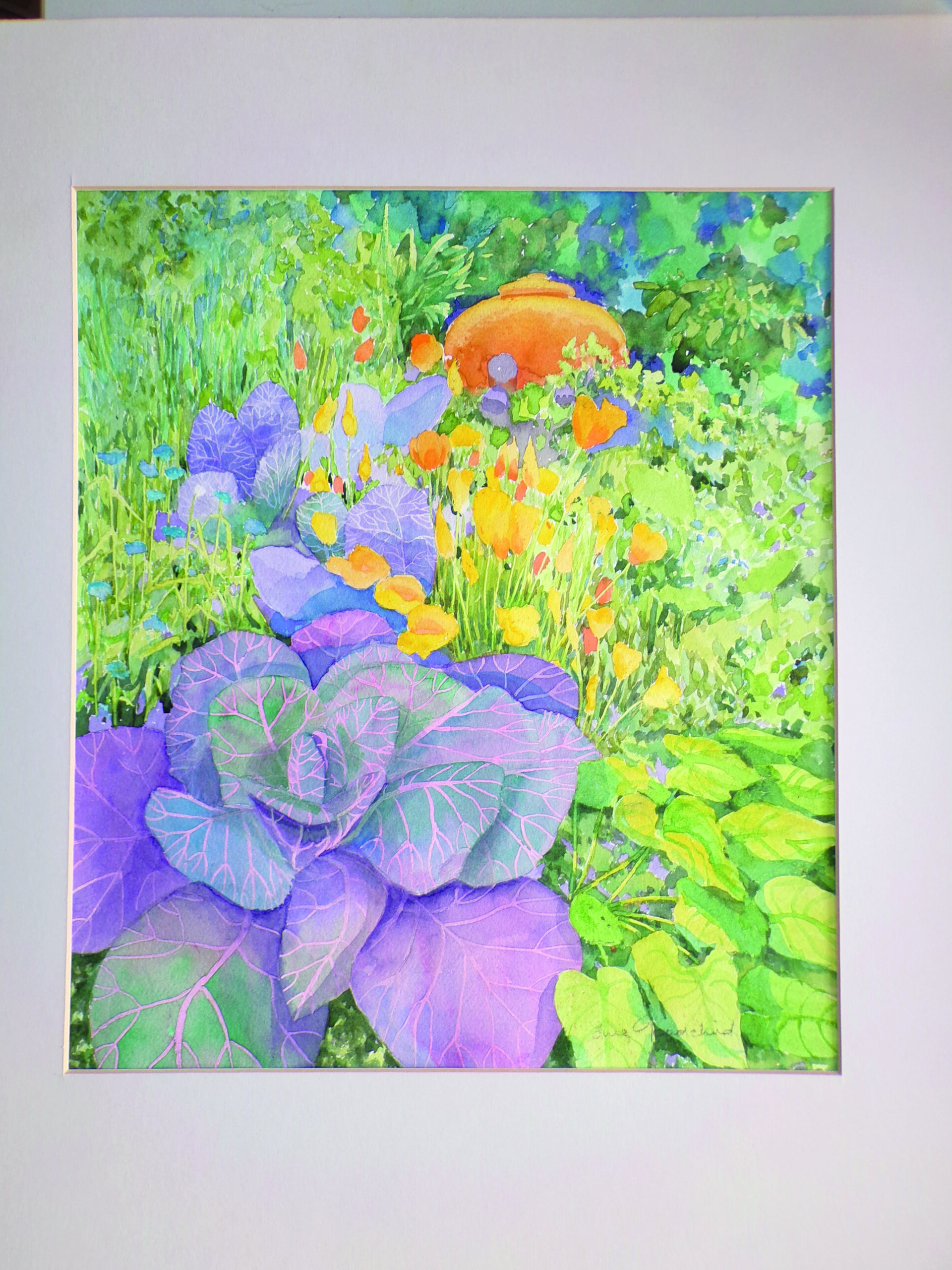
© SUE GOODMAN
Uncle Mick preferred to grow tomatoes in the greenhouse. He taught me about their care and which were the sweetest. Grandmother loved roses. I have fond memories of them climbing around the window of my bedroom at their house. Hydrangeas, planted along the wall, were a wonderful blue colour due to the prodigious amount of tea leaves given to them each day. Everybody tended the flower garden full of sweet-smelling plants. I was so proud to bring my friends to this haven of delight.
With each successive house of my own, I have created a garden, often dealing with unkept scrub. When my husband and I moved to France to create a painting school, we renovated the house and cleared the wild garden, built paths and retaining walls, a herb garden, swimming pool and vegetable garden. Being south-facing and with the protection of the pool walls, the bananas flowered and produced fruit, but the season was not long enough for them to ripen. However, the vegetables were also protected and faired well.
While running the courses, we bought a ruin with tumbledown walls, no roof and a garden full of rubble, rocks, stones and bramble. As the ruin wasn’t far from the main house, from time to time we were able to tame the garden, buying a little more ground and installing potting and tool sheds. We built a studio for me and a workshop for Paul, installed underfloor heating, demolished broken-down outhouses, moved tons of rock, created a wildlife pond and laid out the vegetable garden and flower borders. After turning a heap of stone into a home, we moved. I hated leaving the ‘big’ house and garden but after 20 years of running the courses we decided to move to the smaller house.
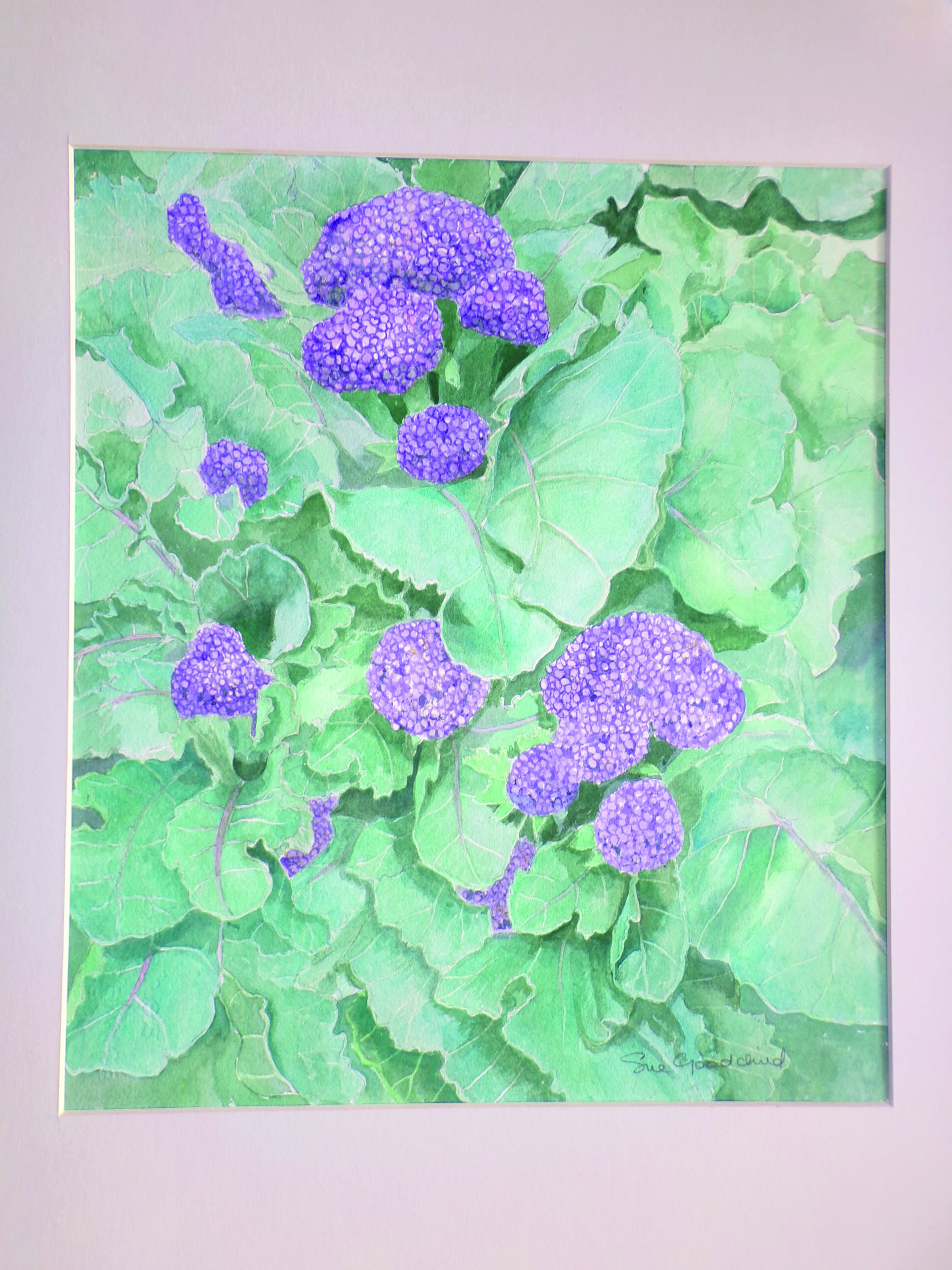
© SUE GOODMAN
WIND AND WATER
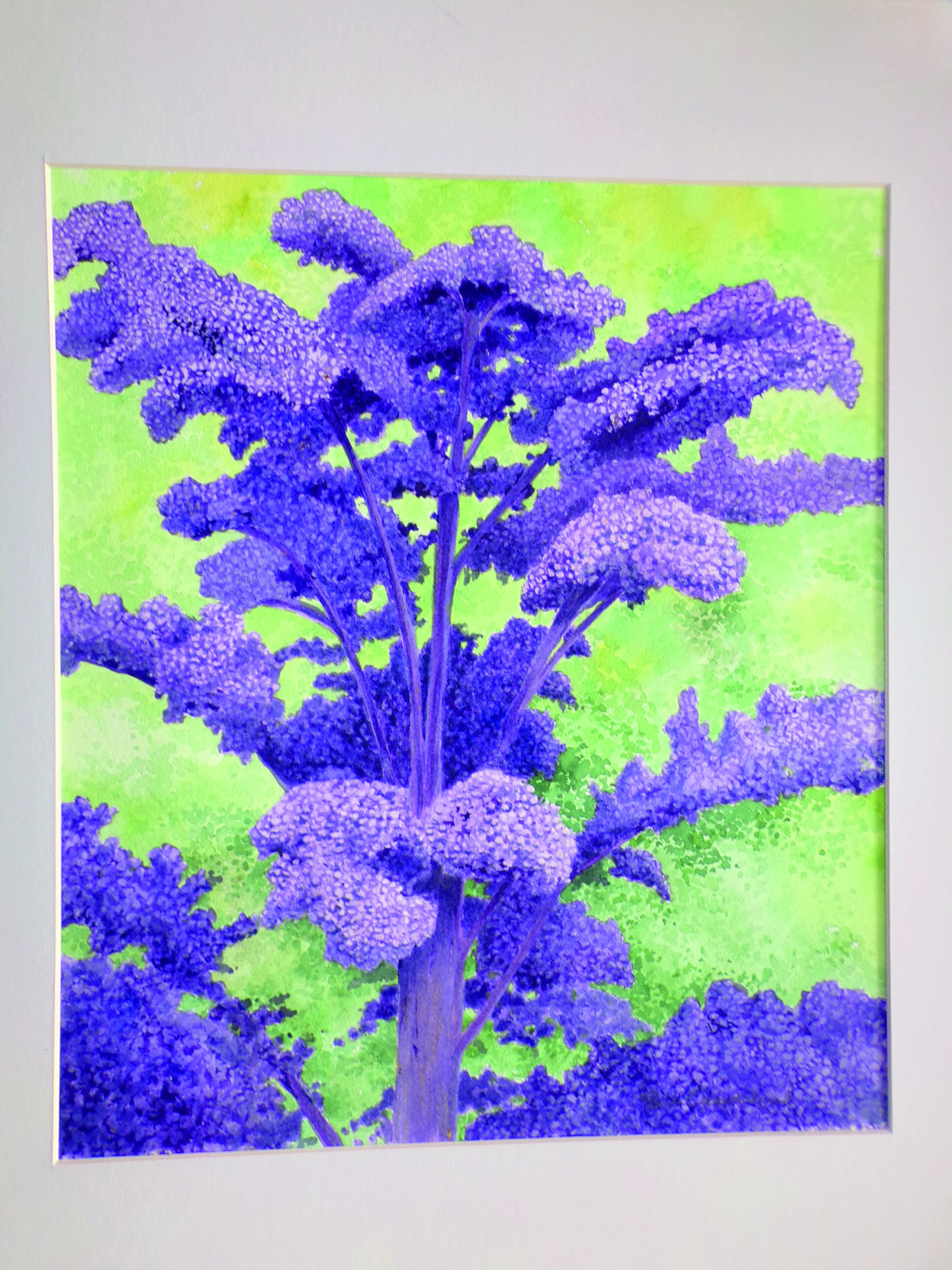
© SUE GOODMAN
Locating the vegetable garden was important. As we live on a hill, it needed to be sheltered from the north wind. It is surrounded on two sides by a copse of cherry, hawthorn, oak, chestnut, lime and holly and a lot of bramble. This provides food and shelter to wildlife such as hedgehogs, and gives us shelter from the east wind, though not from the prevailing southwest wind. Some years ago, when visiting a château garden with my sister Mag, I collected some black walnuts which germinated well and are now planted on the west side. As Mag died soon after, these trees are important, but they don’t stop the wind, which can be ferocious.
Being on a hill, or really a plateau, also means that the soil is free draining. Few vegetables are drought tolerant, so a water source needed to be close by. There is an old well on the boundary – its position on a hill is a puzzle, especially since it is not efficient, but then water courses change with time. Perhaps in years past, there was a useful spring. Now we have numerous barrels which collect water from guttering as well as a mains water supply to use when absolutely necessary.
As the ground is stony, raised beds seemed a good decision – the structure of the soil has been improved by years of adding compost and I can reach the centres of the borders from either side. To start with, I used wooden boards, but these dried and crumpled in the summer heat summer and wet winters, so we made edgings which look decorative and do the job well. Homemade compost and a friend’s horse have built up the fertility, and the raised beds warm faster in spring.
GOOD COMPANIONS
As vegetables come from all parts of the world, they need different growing conditions. Man with his ingenuity has been breeding and selecting varieties of these plants so that they can grow side by side and flourish even when they have different needs.
The gardener has to learn what is needed and when. Carrots and parsnips must have good straight roots but if grown in newly manured ground will fork and become mishapen, while brassicas, including sprouts, cabbages, broccoli, kale and radish, will thrive. Potatoes need good tubers, peas good seeds, and runner beans and courgettes plenty of compost at their roots to produce a good crop. Companion planting is worth considering as some plants enjoy the same conditions. Cabbages and brussel sprouts, or roots, beetroot and lettuce are good companions, drawing nutrients from different depths in the soil. Beans and cucumbers, or leeks and celery, or runner beans and bush tomatoes, all enjoy rich, moist soil and take advantage of light at different levels.
Squashes, courgettes and pumpkins provide moisture-retentive ground cover for sweetcorn while suppressing weeds. Lettuces draw lightly from the soil and grow well under runner beans, making use of an awkward area. Interplanting cool-loving lettuce among sweetcorn, aubergines and peppers maximises use of space. Monoculture encourages bugs but companion planting can also confuse unwanted bugs with different scents. Aphids prefer lush green foliage, so planting crops like beans interplanted with purple, red or blue crops such as red cabbage, red kale, purple sprouting broccoli, or ruby chard can confuse. Growing tomatoes, beans and cucumber among brassicas confuses beetles. Aromatic herbs such as garlic and chives act as a barrier, and I ring vulnerable plants with calendula, tagetes, nasturtiums, basil, caraway and other spicy herbs.
Growing a variety of plants attracts predators. Planting nectar-rich flowers such as sweet peas, poppies, forget-me- nots, feverfew, violas, fennel or marigolds encourages natural predators like hoverflies, which lay their eggs on plants and their larvae eat the aphids and other pests. I let these flowering plants self-seed so that they appear in the vegetable and flower gardens.
TUNNEL VISION

© SUE GOODMAN
We live in a mild climate but even so, the polytunnel and greenhouse are invaluable. I grow salads all year. In spring, crops of lettuce, early peas and carrots followed by melons, basil and peppers. In winter, it’s shelter for tender plants and numerous cuttings. A cloche within the tunnel gives extra protection in cold weather is important to choose. It the right crops for the right conditions as in summer the heat can be overpowering and in winter humidity is a problem. Ventilation is crucial. When light levels improve in spring, the tunnel is the ideal place for seedlings. The soil in the tunnel needs to be replaced every spring. I take out the top layer and add a top dressing of fresh compost, and water well before any planting. This gives the soil time to settle and encourages earth worms.
As seedlings become ready to plant outdoors, a few can be planted in the tunnel where they will be ready to harvest several weeks earlier than outside. I grow various flowers in the tunnel to attract pollinating insects such as hoverflies including hawk moths who love nicotiana.
Rotation is important. Plants belong to families and a disease of one plant can affect other plants in the same family. Club root, a well-known disease of cabbages, can be passed on through the soil if another member of the cabbage family, such as broccoli, is grown in the same place, yet will have no effect on potatoes. Potato blight can affect tomatoes which are a close relative, but has no effect on beans. The rotation system prevents many pests and diseases with a three-year rotation but five is better. One group of vegetables is grown in each plot and in subsequent years moved to another plot. Some plants can improve the soil; for instance, peas and beans have nodules on their roots containing bacteria that can stabilise nitrogen extracted from the air. If the roots are left in the ground after harvest, the following crop can benefit. Different crops take different elements from the soil, so by rotating them it allows the soil to recover its nutrient status. These nutrients keep crops healthier, so that they are better able to shrug off pests.
ARTFUL DESIGN
Planning the garden rotation is much the same as in a painting. The thought prior to sowing and planting is the same as composing a sketch. The design is all important. I sketch out a plan of the garden with each raised bed to be planted, ticking off permanently planted beds such as asparagus. It is also important to plan sowing times so similar vegetables don’t mature at the same time. It is best to sow in smaller quantities at intervals through the season so that cropping follows one after another.
Winter and spring crops need time to grow through the year as they mature slowly. Lettuce and beetroot when harvested make room for growing winter crops. This way there is not so much of a glut with one crop following on from another.
Many plants, ornamental and edible, can be sown directly into seedbeds or first raised in pots then transplanted. Some, however, resent this disturbance and need to be sown direct. Vegetables such as carrots and parsnips hate root disturbance. Transplanting can damage the delicate tap roots or fine hairs and put the plants into shock.
Success with direct sowing means good soil preparation and only sowing when the ground is warm enough. My paintings have to be done fairly quickly unless painted in situ, because once picked, leaves deteriorate and roots dry. I start with a pencil, drawing, working out the composition and planning colours and tones, giving a shape with which to work. Most sketches are in watercolour or graphite. The garden is a work in progress as it evolves and changes, and painting is the same, project after project, learning with each new experience. With knowledge comes the realisation that there is always more to learn and more to experience. My book is derived from personal experience and with love of all that I do, painting and gardening. My aim is to capture these magical moments on paper or canvas in a way that is not possible by photography.
Vegetables: The Artist and the Gandener, by Sue Goodman is available on Amazon…
Looking for more like this?
French Property News magazine not only delivers in-depth regional buying guides, sound and trusted advice from leading experts and inspirational real life stories, but also practical information and tips on living in France.
Lead photo credit : Sue and her husband have transformed their French garden from a wilderness into a place of quiet beauty, © SUE GOODMAN
Share to: Facebook Twitter LinkedIn Email
More in gardening, Living in France

